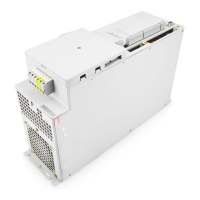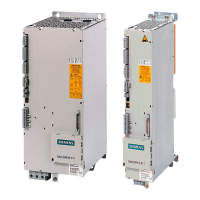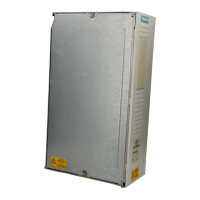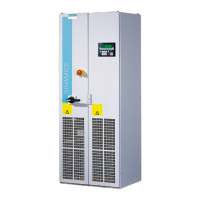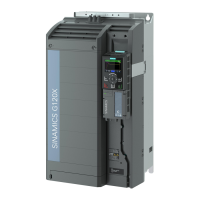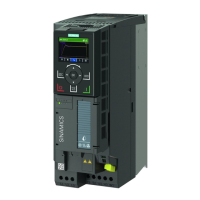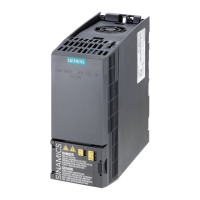01.04 Description
SIEMENS AG 6SG7000-0BA76 3-3
SIMOTRAS HD Operating Instructions
3.3.2 Speed control using stator phase-angle control
The amplitude of the fundamental wave of the supply voltage is changed using the stator phase-
angle control. With a constantly ascending ramp for the setpoint voltage from zero to maximum
activation, the control angle and therefore the voltage time-area are continually increased. This
increases the motor voltage (U
M
) continually and the drive is thereby slowly accelerated. The motor
torque increases proportionally to U
M
2
.
M
3 ~
Phase-angle control Motor
M
M
M
L
Load
n
Mains
Figure 3.3.2.1 Simplified drive diagram with stator phase-angle control and asynchronous
machine under load
n
N
n
K
n
0
n
M
0
M
A
M
S
M
K
M
B
*
M
A
*
M*
With direct start-up:
- simple squirrel-
cage rotor
- double squirrel-
cage rotor
Motor characteristics
n
0
= Synchronous speed
n
N
= Speed at nominal working point
n
K
= Speed at pull-out torque
M
K
= Pull-out torque of simple squirrel-cage rotor
M
S
= Torque at dip
M
A
= Start-up torque of simple squirrel-cage rotor
without stator phase-angle control
M
L
= Load torque
M
M
= Motor torque
M
A
* = Start-up torque with stator phase-angle control
M* = Temporary motor characteristic
M
B
* = Acceleration torque
Possible load characteristic M
L
M
L
M
M
Figure 3.3.2.2 Simplified characteristic curve of the asynchronous machine with stator phase-
angle control for a direction of rotation/torque direction
M* = temporarily effective motor characteristic (dotted line) for a single squirrel-cage motor with
stator phase-angle control
M
B
* = Acceleration torque of the drive provides the speed ramp-up. Derived from the present
difference M
M
– M
L
. The acceleration torque M
B
effective across the entire range is shown
as the shaded area in the figure.
M
A
* = Start-up torque of the motor set by the stator phase-angle. In order to start, M
A
* must be
larger than the load torque M
L
.

